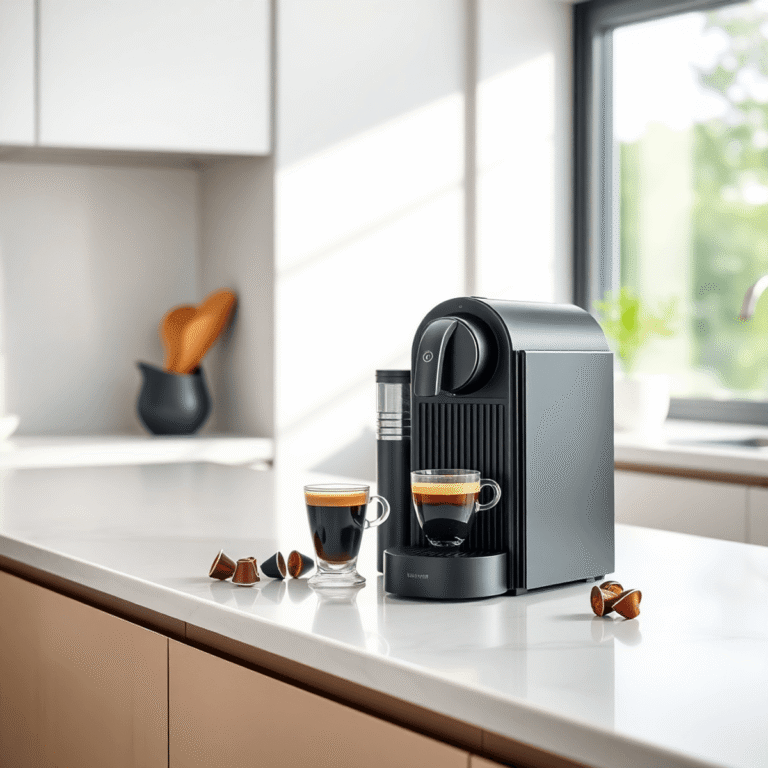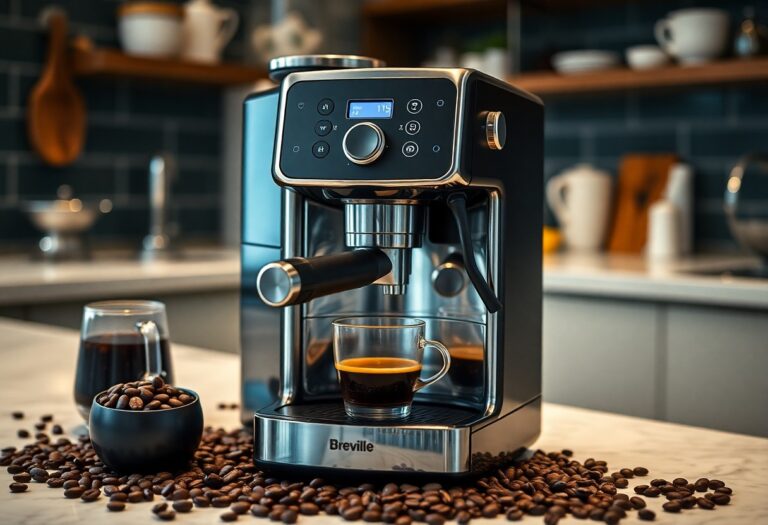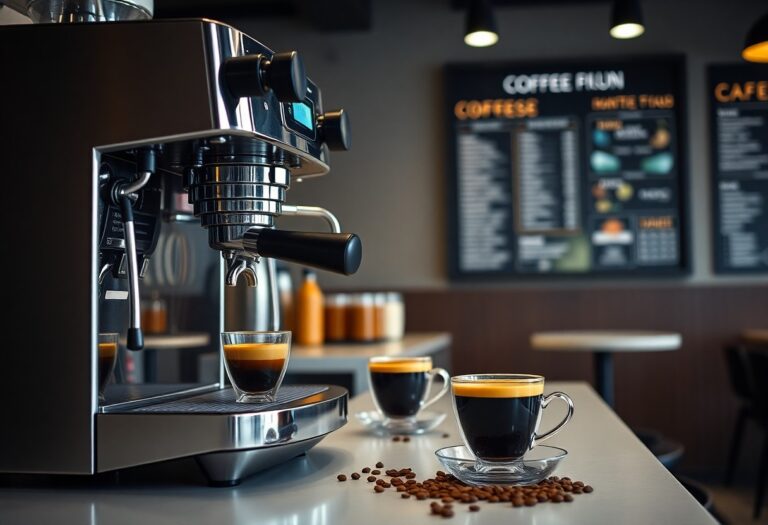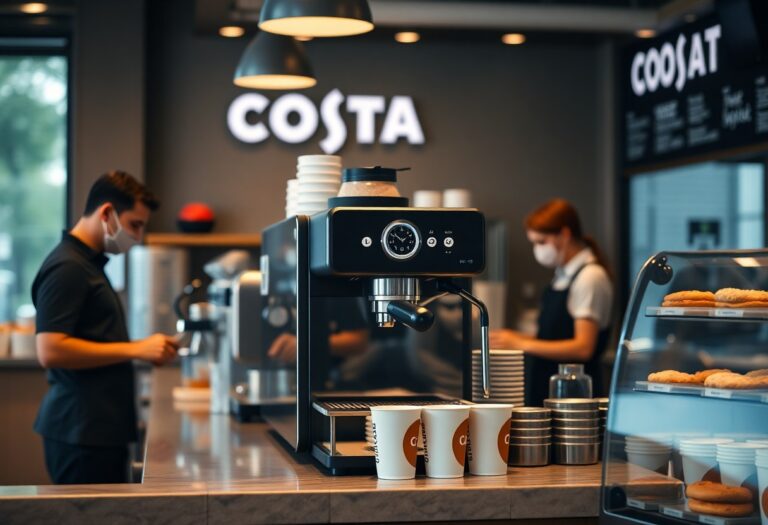What is the Best Coffee for an Espresso Machine – Bean Quality
It’s imperative to choose the right coffee beans for your espresso machine to achieve that perfect cup. The quality of the beans directly impacts the flavor, aroma, and overall experience of your espresso. To get the best results, you should consider factors like roast level, bean origin, and freshness. Investing in premium beans will elevate your coffee game and enhance your daily routine. For expert recommendations, check out the Best Espresso Beans in 2025: My 10 Current Favorites.
Key Takeaways:
- High-quality beans are necessary for producing a rich and flavorful espresso.
- Look for freshly roasted coffee beans, ideally roasted within the last two weeks.
- Single-origin beans can offer unique flavor profiles, while blends provide consistency.
- Beans should have a medium to dark roast, as these levels enhance the sweetness and body of espresso.
- Choose beans specifically labeled for espresso to ensure optimal extraction and taste.

The Foundation of Flavor: Coffee Bean Varieties
Your choice of coffee bean variety lays the groundwork for the flavor profile of your espresso. The two most commonly recognized varieties are Arabica and Robusta, each contributing distinct characteristics. Arabica beans, known for their smooth, complex flavors and higher acidity, often include notes of fruit and sugar, making them a favorite among espresso enthusiasts. In contrast, Robusta beans provide a more bitter, earthy flavor profile, along with a thicker crema and a higher caffeine content, which can add a punch to your espresso experience.
Arabica vs. Robusta: The Flavor Showdown
In the battle of Arabica vs. Robusta, Arabica typically reigns supreme in the world of specialty coffee, offering a nuanced flavor experience. Alternatively, Robusta’s boldness and higher caffeine level can be appealing for those seeking a stronger kick in their brew. Understanding these differences helps you tailor your espresso to your desired taste, whether you prefer the sweetness of Arabica or the robustness of Robusta.
The Impact of Bean Origin on Taste Profiles
The origin of your coffee beans plays a significant role in determining the flavor of your espresso. Factors such as climate, soil composition, and altitude contribute to specific taste notes, providing beans from different regions their unique profiles. For instance, beans from Ethiopia might present floral or fruity tasting notes, while those from Colombia often embody a balanced acidity and creamy body. Exploring the diverse flavor palettes associated with various origins can elevate your espresso experience.
Delving deeper into bean origins reveals a world of flavor potentials. For example, coffee grown in Brazil, typically known for its chocolatey notes and nutty undertones, contrasts sharply with the bright, citrusy flavors found in Central American beans like those from Guatemala. Additionally, African coffees, particularly from regions like Kenya, can showcase high acidity and vibrant berry notes. Understanding these regional distinctions empowers you to select beans best suited to your espresso machine, allowing for a more personalized and rewarding coffee journey.
The Roast Factor: How Roasting Profile Shapes Espresso
The roasting process dramatically influences the flavor profile and consistency of your espresso. Different roasters apply varying techniques to bring out distinct characteristics in the beans. For espresso, the goal is to achieve a balance that highlights sweetness, acidity, and body, while minimizing bitterness. A well-executed roast enhances the natural flavors of the beans, allowing for a versatile espresso experience. Check out The 11 Best Whole Bean Espressos You Can Buy On … for some top options that showcase these qualities.
Light, Medium, and Dark Roasts: What Works Best?
Your choice between light, medium, and dark roasts can significantly impact the taste of your espresso. Light roasts preserve more acidity and fruity notes, highlighting the bean’s unique origin characteristics. Medium roasts offer a balance, often presenting sweet and rich flavors without excessive acidity. Dark roasts tend to yield a bold, robust profile with heavier body and lower acidity, making them a popular choice for those who prefer deeper flavors. Understanding your palate will help you select the ideal roast for your espresso.
The Art and Science of Roasting for Espresso Machines
A meticulous approach to roasting is vital for crafting the perfect espresso blend. Experienced roasters utilize objective data, such as temperature and time profiles, to achieve desired flavor results. Each bean type reacts differently to heat, so it’s crucial to monitor its development carefully. Techniques like first crack and second crack are crucial indicators for determining roast levels. An expert roast not only enhances aroma and taste but also ensures consistency in extraction, resulting in a stable espresso shot every time you brew.
Freshness Matters: Timing Your Beans for Optimal Extraction
Optimal extraction is significantly influenced by the freshness of your coffee beans. Ideally, you should use beans that have been roasted within the past two weeks for the best flavor and aroma. After roasting, beans undergo a process of outgassing, which can affect taste if left too long. Aim to grind your beans just before brewing to preserve their oils and flavors—once ground, the aromatic compounds begin to dissipate rapidly. Timing your beans right allows you to harness the full potential of rich, nuanced flavors specifically desired in espresso.
How Green Coffee Beans Affect the Brew
Green coffee beans, those that haven’t been roasted, can drastically impact the final product. These beans contain higher levels of acidity and can taste grassy or sour if brewed. Proper roasting transforms these compounds, unlocking the complex flavors that espresso drinkers crave. Choosing high-quality, well-sourced green beans ensures that your roast will result in a vibrant and pleasant flavor profile, paving the way for a superior espresso experience.
The Role of Packaging and Storage in Preserving Freshness
The way you store your coffee beans significantly influences their freshness and flavor. Airtight containers that block light and moisture are crucial to maintaining the integrity of your beans. Ensure that your coffee is stored in a cool, dark place, away from heat sources. Avoid refrigerating or freezing your beans, as this can lead to moisture and temperature fluctuations that compromise flavor. By prioritizing proper storage, you can extend the life of your beans and consistently enjoy exceptional espresso.
Using airtight packaging can be a game changer for preserving freshness. With a seal that minimizes air exposure, the flavor compounds in your beans are better protected, preventing oxidation. Many specialty roasters package their beans in vacuum-sealed bags with one-way valves, allowing gases to escape while keeping air out. This ensures that even if you buy in bulk, your coffee will retain its aromatic properties longer. Be mindful of the storage duration after opening; the fresher your coffee stays, the better your espresso will taste.
Grind Size: The Often-Overlooked Element of Extraction
A common factor in achieving the perfect espresso is grind size, which can significantly impact extraction. Too coarse, and water flows too quickly, yielding a weak cup; too fine, and it may create an over-extracted bitterness. Every espresso machine has its ideal grind, often achieved through a bit of experimentation. Factors such as roast profile and bean origin can further influence your grind settings, making it vital to adapt your approach to every new coffee you explore.
Finding the Perfect Grind for Your Espresso Machine
Your espresso machine’s performance hinges on finding the right grind size for your specific beans. Start with a grinder that offers precise settings and experiment with different grind levels until you notice the effects on taste. Fine-tuning requires attention to detail and ongoing adjustments based on your machine’s pressure and the length of the extraction time, typically around 25-30 seconds for a perfect shot. Optimize your settings for each unique bean to unlock its full flavor potential.
The Relationship Between Grind Consistency and Flavor
Grind consistency plays a pivotal role in achieving balanced flavors in your espresso. Uneven grind sizes can result in a patchy extraction process, leading to both under-extraction and over-extraction within the same shot. Ideally, the size of coffee particles should be uniform, allowing for even contact with water during brewing. This consistent extraction lets the vital flavor notes shine through, giving you a more pleasant and stable espresso experience.
Different methods of grinding, such as blade grinders versus burr grinders, highlight the importance of consistency in the grind size. Blade grinders create uneven particles, leading to varying extraction rates and unpredictable flavors. Conversely, burr grinders produce uniform sizes, improving your brew’s overall quality. By investing in a high-quality grinder and focusing on grind consistency, you drastically enhance your espresso’s flavor profile, ensuring a rich and aromatic experience in every cup.

Sourcing Quality: Where to Buy Superior Coffee Beans
Finding the best coffee beans for your espresso machine requires careful sourcing from reputable suppliers. Roasteries that prioritize quality and sustainability are vital, with many local and online options available. Look for those offering transparent sourcing practices, such as direct trade or organic certifications, to ensure you’re receiving top-notch beans that are fresh and flavorful.
Identifying Top-Quality Suppliers and Roasters
Top-quality suppliers and roasters can significantly enhance your coffee experience. Seek out establishments that provide detailed information about their sourcing practices—this often includes information on the origin of their beans, roasting methods, and even the farmers they collaborate with. Customer reviews and third-party certifications can also guide you in selecting reputable sources that align with your quality expectations.
The Benefits of Single-Origin versus Blends
Single-origin coffee beans originate from a specific region, offering unique flavor profiles that reflect their geographical nuances. In contrast, blends combine beans from multiple regions to achieve a balanced flavor. Single-origin coffees tend to display distinct tasting notes and qualities, making them ideal for espresso enthusiasts who appreciate unique, robust flavors. Blends, however, can provide consistent taste and complexity, appealing to those who prefer a harmonious cup.
Choosing between single-origin and blends ultimately depends on your taste preferences and espresso goals. Single-origin coffees often highlight terroir, featuring specific flavors influenced by soil, climate, and cultivation methods. For instance, Ethiopian beans may offer fruity and floral notes, while Colombian beans might present a smoother profile with nuttier undertones. On the other hand, blends can deliver a well-rounded flavor experience by marrying the strengths of various beans, allowing you to customize your espresso based on your mood or occasion. Experimenting with both options will help you discover which type resonates with your palate, potentially expanding your coffee repertoire.
Final Words
Following this guide, you should have a clearer understanding of the importance of bean quality in your espresso machine. Selecting high-quality coffee beans sourced from reputable suppliers will greatly enhance your brewing experience. Pay attention to factors like roast date, origin, and flavor profile to ensure you achieve a rich and satisfying cup. By investing in premium beans and experimenting with various types, you can elevate your espresso to new heights, making each shot a delightful experience tailored to your taste preferences.
FAQ
Q: What beans are recommended for espresso brewing?
A: The best beans for espresso brewing are typically arabica or a blend of arabica and robusta. Arabica beans tend to be sweeter and more complex in flavor, while robusta adds a richness and a slight bitterness, as well as a higher caffeine content. Many baristas suggest a medium to dark roast for espresso, as it enhances the extraction process and creates a thicker crema.
Q: How does roast level affect espresso flavor?
A: Roast level significantly impacts the flavor profile of espresso. Medium roasts often highlight the beans’ original flavors and acidity, while darker roasts bring out deeper, chocolatey notes and reduced acidity. However, over-roasting can lead to a burnt taste. For espresso, finding a roast level that balances flavor complexity and sweetness is key, and many prefer a darker roast for its richness and consistency.
Q: Are freshly roasted beans better for espresso?
A: Yes, freshly roasted beans generally produce a better-tasting espresso. Freshness is important because coffee beans lose their flavor and aroma over time as they oxidize. It is best to use beans that have been roasted within the last two to three weeks to ensure optimal flavor extraction during brewing. Additionally, grinding beans just before brewing maximizes freshness and taste.
Q: What is the impact of grind size on the quality of espresso?
A: Grind size is a critical factor in espresso quality. A finer grind increases the surface area of the coffee, which can enhance extraction and create a thicker crema. However, if the grind is too fine, it can lead to over-extraction, resulting in bitterness. Conversely, a coarser grind can lead to under-extraction, making the espresso sour. It’s crucial to find the right balance to achieve a well-rounded flavor.
Q: Should I look for specific certifications when choosing coffee beans for espresso?
A: Yes, certifications can help guide your coffee selection. Look for beans that are labeled organic, fair trade, or specialty grade, as these often indicate a higher quality product. Specialty grade beans undergo rigorous grading processes and are considered to have superior flavor profiles. Certifications also reflect ethical sourcing practices, which can be an important consideration for many coffee enthusiasts.







